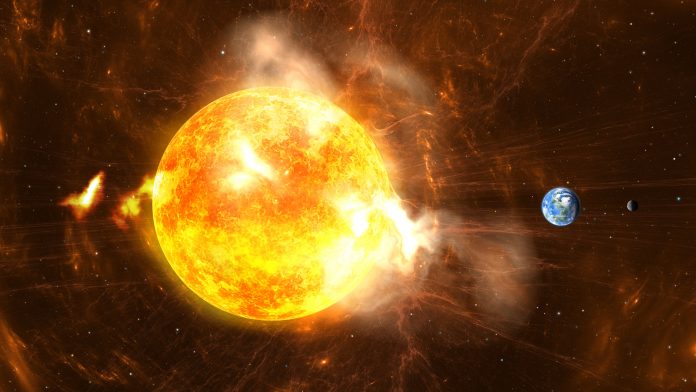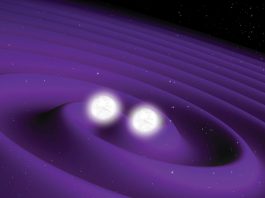A new type of rocket thruster that exploits the mechanism behind solar flares has been proposed by a physicist at the US Department of Energy’s (DOE) Princeton Plasma Physics Laboratory (PPPL).
The rocket thruster would apply magnetic fields to cause particles of plasma, electrically charged gas also known as the fourth state of matter, to shoot out the back of a rocket and, because of the conservation of momentum, propel the craft forward.
PPPL Principal Research Physicist Fatima Ebrahimi, the concept’s inventor and author of a paper detailing the proposal in the Journal of Plasma Physics, said: “I’ve been cooking this concept for a while. I had the idea in 2017 while sitting on a deck and thinking about the similarities between a car’s exhaust and the high-velocity exhaust particles created by PPPL’s National Spherical Torus Experiment (NSTX). During its operation, this tokamak produces magnetic bubbles called plasmoids that move at around 20 kilometres per second, which seemed to me a lot like thrust.”
Current plasma thrusters that use electric fields to propel the particles can only produce low specific impulse or speed. Computer simulations performed at PPPL and the National Energy Research Scientific Computing Center at Lawrence Berkeley National Laboratory, California, showed that the new plasma thruster concept can generate exhaust with velocities of hundreds of kilometres per second, ten times faster than those of other thrusters.
Ebrahimi said: “Long-distance travel takes months or years because the specific impulse of chemical rocket engines is very low, so the craft takes a while to get up to speed. But if we make thrusters based on magnetic reconnection, then we could conceivably complete long-distance missions in a shorter period of time.”
This concept broadens PPPL’s portfolio of space propulsion research. Other projects include the Hall Thruster Experiment which was started in 1999 by PPPL physicists Yevgeny Raitses and Nathaniel Fisch to investigate the use of plasma particles for moving spacecraft. Raitses and students are also investigating the use of tiny Hall thrusters to give small satellites called CubeSats greater manoeuvrability as they orbit the Earth.









